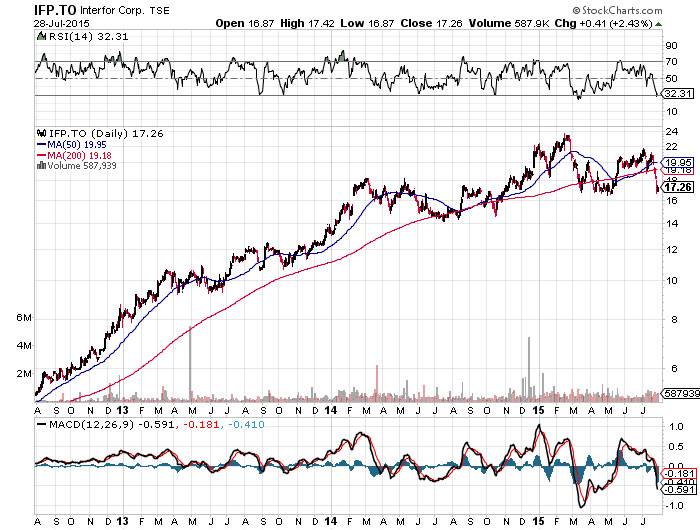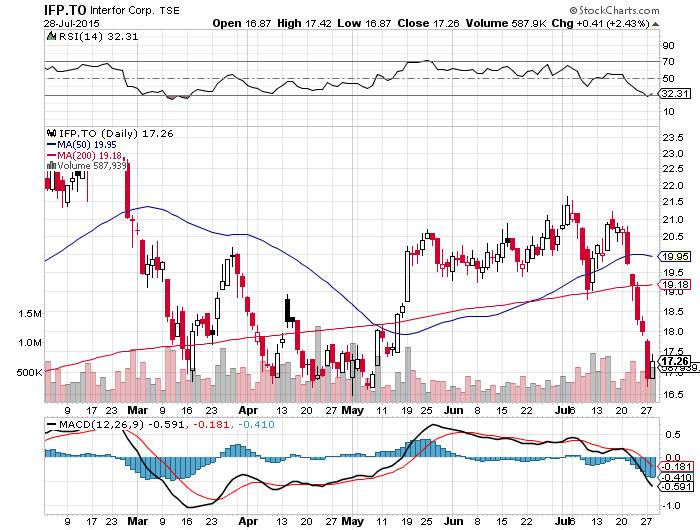Hi Lou,
Can you please analyze IFP?
Thank You
Yasser
---
Hey Yasser,
Thanks for the assignment. This will be the first time that I examine the charts for Interfor Corp. (IFP-T). IFP is driving growth through acquisitions with a focus on their U.S. operations. The company operates in British Columbia, The U.S northwest, and the U.S. south. Two-thirds of the company's production capacity is in the U.S. and 76 per cent of their volume is sold in the U.S.
When you are investing in the lumber business, you are leaning into the housing market and, in this case, IFP is leveraged to the health of the U.S. housing market. There are a number of factors that influence housing demand, including interest rates and employment growth.
Interest rates in the U.S. haven't gone up in nine years, although there is talk that we will see a move before the year is out. When we look at the unemployment situation south of the border, it would seem that the economy is close to full employment. However, there are concerns that with the participation rate at the lowest level since 1977 things are not as rosy as the unemployment statistics might suggest.
A scope of the charts will form the foundation of my analysis.
The outstanding feature on the three-year chart is the break below the 50 and 200-day moving average in July of 2015. The shares hit a 52-week high of $23.61 in February of 2015 and have retreated 26.89 per cent from the high. The moving average convergence divergence (MACD) and the relative strength index (RSI) have generated a number of buy and sell signals since the beginning of the year that could have helped generate trading profits for those so inclined.
The six-month chart points to the the challenges IFP has faced in July. A double top surfaced by mid month sending the shares into a decline that now sees them retesting support near $16.50. Concurrently, the MACD and the RSI generated sell signals that have yet to indicate that buyers are returning to the market.
At this point in time, I would advise trading IFP when you identify profitable opportunities.
Make it a profitable day and happy capitalism!
Have your own question for Lou? Send it in to lou@happycapitalism.com.

